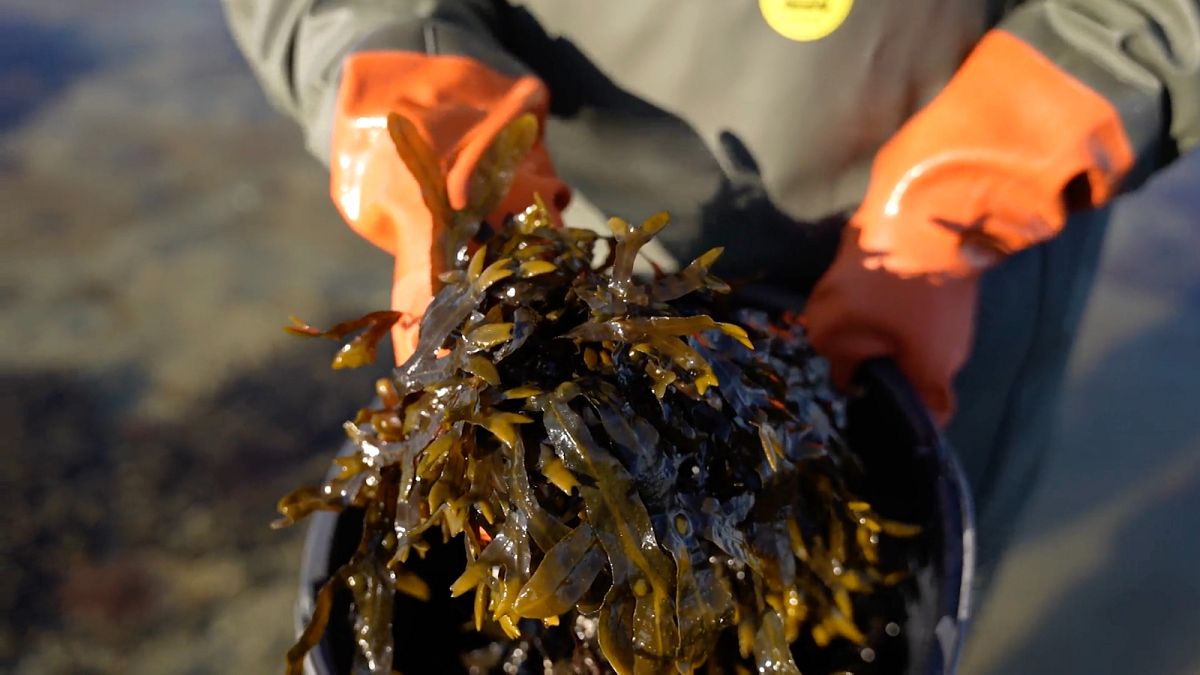Denmark and Germany promote the use of edible seaweed in a European project

Jamileh Javidpour, a biologist and professor at the University of Southern Denmark, explains that seaweed is considered “green gold” because of its nutritional properties, low fat content and reduced carbon footprint compared to fish or beef production.
“Now is the right time” to go for this type of production, says Jamileh Javidpour.
In Denmark, entrepreneurs are seeking to promote its consumption. Mads Hecter, the country’s largest producer of edible seaweed, operates a nineteen-hectare farm off the coast of Kerteminde. He cultivates two of the project’s star seaweeds: Palmaria Palmata and Saccharina Latissima are a mainstay of Japanese cuisine. He inserts and attaches the spores directly to the ropes to guarantee more than one harvest per year and is firmly committed to sustainability.
Mads explains that his cultivation method allows the same plant to be harvested for several years.
Another objective of this project is to raise awareness about seaweed consumption. Researchers and students are creating a cookbook involving four secondary schools, including the Langeland boarding school.
Katrine Kaae Hansen, a biologist at Fjord Baelt, a research and public information institute associated with this project, gives us an example of edible seaweed by showing us a drawing: “This is often terms ‘sea bacon’, it also contains a lot of protein. It can be used instead of bacon. It is more sustainable and also healthier. That is why education is so important: young people are the future and they are future consumers.”

The best way to discover a new food and its benefits is to try it. The awareness-raising efforts to introduce this product offered by the sea into our diet include special workshops. Students and the chef at Langelands Efterskole High School have prepared seaweed-based dishes, a first for Reyhaneh, an Iranian student resident at the boarding school. She says the seaweed salad “has a chewy, crunchy texture”.
Two countries are participating in AlgaeFood: Denmark and Germany. This project has a total budget of 1.9 million euros, 65% of which comes from the European cohesion policy.
